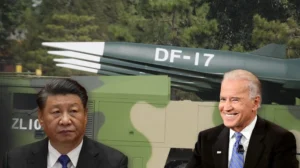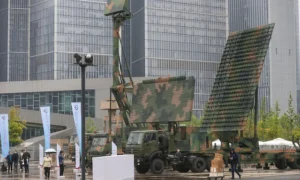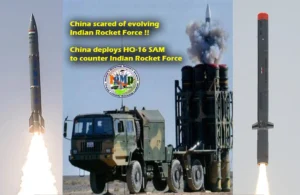THE PHILIPPINES should start boosting its own defense industry amid rising external threats in the region, according to security analysts, who said it could learn from India’s growing naval power. India, which also confronts an increasingly belligerent China, has been trying to boost its domestic defense production, which had been stalled several times. It is now seeking to make its Navy to fully self-reliant by 2047.
Like the Philippines, India relies heavily on defense imports. But Indian arms imports in 2021 fell by 21% to $15.4 billion from four years earlier, “while China’s dependency increased further,” said Don Mclain Gill, a lecturer of international studies at De La Salle University in Manila.
Indian exports of arms have also risen in the past few years, and it plans to increase its export of weapon systems to $4.87 billion by 2025, he said in a Facebook Messenger chat.
Indian defense exports rose 10 times over six years to 159.2 billion rupee ($1.9 billion) in 2022 to 2023, according to Hindustan Times.
Philippine National Security Adviser Eduardo M. Año this month said they aim to “reorient the focus of the Armed Forces toward external defense,” as he cited gains from the government’s anti-communist insurgency campaign.
The Philippines, which is also a net importing country, should learn from Indian efforts to manufacture its own defense equipment, Mr. Gill said. He noted that New Delhi has been boosting defense research and development with the help of startups and academics.
He added that India has partnered with technologically advanced powers to “improve its defense manufacturing capabilities.”
“While in the past, Western countries have been wary of transferring advanced defense technology to India, New Delhi is now co-developing combat jet engines with France, while also working on similar arrangements with other Western powers, including the United States,” Mr. Gil said.
Joshua Bernard B. Espeña, a resident fellow at Manila-based think tank International Development and Security Cooperation, said the Philippine Navy is too far away.
“To go beyond this sorry state, the Philippine government has to address two prerequisites: understand the economies of scale in the local and international context of defense industries and make its economy work to play this game,” he said via Messenger chat. “It must recognize that demand is narrow.”
He cited the Navy’s lack of domain awareness and munitions such as surface-to-air or anti-ship missiles.
The government should have a bigger responsibility in any push to manufacture local arms, whether for the entire Navy or for select systems and equipment, Mr. Eduardo N. Año said, adding that “there is danger in relying too much on the private sector.”
“It is not the private sector’s responsibility to think about national defense or create a sound geopolitical environment,” he said. “Therefore, the drive for self-sufficiency should be an unequal balance of public-private partnerships.”
WEAK GOV’T SUPPORT
The government should generate the demand “by purchasing locally and promoting the products for export.”
Identifying systems for production and development, gathering raw materials, harnessing research and development, negotiating intellectual property rights and identifying defense industrial zones are among the challenges in indigenizing the systems and equipment needed by the navy, Mr. Espeña said.
Defense items should also be “tried and tested in war to create credibility for export demand.”
Unlike other industries, the defense industry’s supply chain must be controlled by the government based on its demand, “which then is based on its sense of urgency brought by geopolitical shocks,” he added.
“We must be careful with our assumptions: We indigenize not for a misplaced sense of nationalism towards independence,” he said. “We do it because we want to build capabilities or create an ecosystem for militaries to accomplish operational tasks based on strategic priorities.”
Mr. Espeña said it would be wrong to think that defense indigenization would automatically solve the Philippines’ geopolitical vulnerabilities, such as China’s aggression at sea, in the mid to long term.
“Such a mindset is not only misinformed but also too costly for a developing economy, which harms combat readiness in the long shot,” he said. “So far, the Philippine government’s readiness to employ its navy to deter and fight is problematic.”
The Indian government has taken “forcible measures” to cut Indian dependence on foreign manufacturers and indigenize production of big-ticket items like naval utility helicopters, medium anti-ship missiles and drones, Mr. Espeña said. India has made its own 2,500 defense items since 2020, he added.
The analyst lamented the lack of big projects from Philippine companies that manufacture defense equipment, which he said could be attributed to weak government support. “Except for Propmech Corp., which had the opportunity to develop multi-purpose attack craft, there are no visible defense companies out there that are going big.”
BusinessWorld visited Propmech’s shipyard at the Subic Freeport north of the Philippine capital during a media tour earlier this year, and company officials cited the lack of local materials and skilled workers as challenges facing the Philippine shipbuilding industry.
Propmech has built more than a thousand vessels for the Philippines’ defense forces with the help of its 900 employees in different sites across the country.
Lack of funds has prevented the Philippine defense establishment — one of the weakest in the world — from achieving its goal of becoming self-reliant.
Mr. Espena urged lawmakers to fast-track the passage of the proposed Philippine Defense Industrial Development Act, which is among the legislative priorities of the Marcos administration.
“The need for Manila to also operationalize its growing defense relations with its partners beyond a buyer-seller model and one that focuses on capacity building and technology transfer is vital,” Mr. Gill said.
“However, given its current budgetary limitations and the region’s exacerbating security conditions, Manila must prudently balance its priorities because it is not practical to forgo imports of defense equipment given the country’s intent to safeguard its sovereignty and sovereign rights amidst such tumultuous regional conditions,” he added.
WB
https%3A%2F%2Fwww.defencenews.in%2F2023%2F09%2Fphilippines-to-seek-more-weapons-from-india%2F






